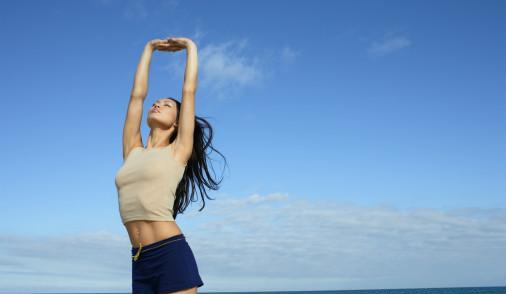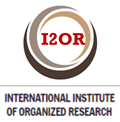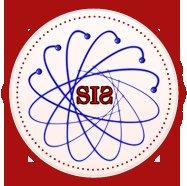Efectividad de los ejercicios de relajación en la recuperación física en estudiantes universitarios

Resumen
Se realizó un estudio de intervención con diseño cuasi-experimental con el objetivo de evaluar la efectividad de la aplicación de los ejercicios de relajación para lograr la recuperación física de los estudiantes durante las clases de Educación Física. Se formaron dos grupos: experimental y control. A partir de una población de 41 estudiantes de segundo año de estomatología de la Filial de Ciencias Médicas de Bayamo, mediante un muestreo simple aleatorio se eligieron para cada conjunto 21 y 20 sujetos respectivamente; se aplicaron cuestionarios de autoevaluación al inicio y final del estudio. Los datos se analizaron con el programa Statistica 8.0, empleando los métodos análisis de varianza por Friedman y Kendall Coefficient of Concordance, el de Kruskal-Wallis por Ranks para la variable por ciento de recuperación física y el de Cochrane Q test para valorar los resultados de los cuestionarios; mientras que el paquete estadístico EPIDAT sirvió para determinar la efectividad de la intervención. Al inicio de la investigación no se encontraron diferencias estadísticamente significativas (p =0,07) entre ambos grupos con valores de 55,51 (± 6,50) y 53,56 (± 4,90) para el por ciento de recuperación física, y a partir de la clase número seis se encontró diferencia significativa con valores de 47,99 (±5,91) y de 47,21 (±4,34); al finalizar el estudio el por ciento de recuperación física fue de 24,24 (±13,35) y 37,17 (± 5,30) para el grupo experimental y control respectivamente y un valor de p =0,000. La respuesta recuperativa de los estudiantes mejora notablemente con el uso de las técnicas de relajación, por lo que la intervención resultó efectiva.
Palabras clave
Referencias
Spiegel H, Spiegel D. Trance and treatment: Clinical uses hypnosis. Washington, DC: American Psychiatric Press; 1987.
Martínez B. Hipnosis, teoría, métodos y técnicas. La Habana: Científico- Técnica; 1989.
Ortega R. Juegos de relajación en educación infantil: Los más pequeños aprenden a respirar. Rev Investig Educ. 2006; 22 (1):320-5.
Neuner F, Schauer E, Catani C, Ruf M, Elbert T. Post-tsunami stress: a study of posttraumatic stress disorder in children living in three severely affected regions in Sri Lanka. J Trauma Stress. 2006; 19(3):339-47.
Rose S, Bisson J, Wessely S. A systematic review of single-session psychological interventions ('debriefing') following trauma. Psychother Psychosom. 2003; 72(4):176-184.
Van Emmerik AA, Kamphuis JH, Hulsbosch AM, Emmelkamp PM. Single session debriefing after psychological trauma: a metaanalysis. Lancet. 2002; 360(9335):766-71.
Stallard P. Psychological interventions for post-traumatic reactions in children and young people: a review of randomized controlled trials. Clin Psychol Rev. 2006; 26(7):895-911.
Cohen JA, Deblinger E, Mannarino AP, Steer RA. A multisite, randomized controlled trial for children with sexual abuserelated PTSD symptoms. J Am Acad Child Adolesc Psychiatr. 2004; 43(4):393-402.
Cohen JA, Mannarino AP, Perel JM, Staron V. A pilot randomized controlled trial of combined trauma-focused CBT and sertraline for childhood PTSD symptoms. J Am Acad Child Adolesc Psychiatr. 2007; 46(7):811-9.
Smith P, Yule W, Perrin S, Tranah T, Dalgleish T, Clark DM. Cognitive behavioral therapy for PTSD in children and adolescents: a preliminary randomized controlled trial. J Am Acad Child Adolesc Psychiatr. 2007; 46(8):1051-61.
Stein BD, Jaycox LH, Kataoka SH, Wong M, Tu W, Elliott MN, Fink A. A mental health intervention for schoolchildren exposed to violence: a randomized controlled trial. JAMA. 2003; 290(5):603-11.
Schauer M, Neuner F, Elbert T. Narrative Exposure Therapy (NET) – A short term intervention for Traumatic Stress Disorders after War, Terror or Torture. Seattle: Hogrefe & Huber; 2005.
American Heart Association. Exercise standards: a statement for health professionals from the American Heart Association (special report). Circulation. 1990; 82: 2286-322.
Ding J, Chou LW, Kesar TM, Lee SC, Johnston TE, Wexler AS, Binder-Macleod SA. Mathematical model that predicts the force-intensity and force-frequency relationships after spinal cord injuries. Muscle Nerve. 2007; 36(2):214-22.
Castro FJ. La relajación en educación física. Secuenciación de contenidos [Internet]. IES "Ruradia" de Jaén; 2006 [Citado 9 de Jul 2006]. Disponible en: http://www.efdeportes.com/efd93/relaja.htm
Van der Klink JJ, Van Dijk FJ. Dutch practice guidelines for managing adjustment disorders in occupational and primary health care. Scand J Work Environ Health. 2003; 29:478-87.
Perski A. Rehabilitation of stress-related diseases goes on different phases and is often long-lasting (in Swedish)]. Läkartidningen. 2004; 101(14):1292-4.
Hurrell JJ Jr, Murphy LR. Occupational stress intervention. Am J Ind Med. 1996; 29(4):338-341.
Oja P, Mänttäri A, Pokki T, Kukkonen-Harjula K, Laukkanen RMT, Malmberg J, et al. UKK Walk Test - Tester's guide. Tampere, Finland: UKK Institute; 2001.
Oja P, Laukkanen R, Pasanen M, Tyry T, Vuori I. A 2-km walking test for assessing the cardiorespiratory fitness of healthy adults. Int J Sports Med. 1991; 12:356-62.
Raija MT, Laukkanen RMT, Oja P, Ojala ME, Vuori IM: Feasibility of a 2-km walking test for fitnes assessment in a population study. Scand J Soc Med. 1992; 20:119-25.
Lima Silva AE, De Oliveira FR, Nakamura FY, Gevaerd MS. Effect of carbohydrate availability on time to exhaustion in exercise performed at two different intensities. Braz J Med Biol Res. 2009;42 (5) 404 – 12.
Montain SJ, Cheuvront SN, Sawka MN. Exercise associated hyponatremia: quantitative analysis for understand the aetiology. Br. J. Sports Med. 2006; 40: 98–106.
Eniseler N. Heart rate and blood lactate concentrations as predictors of physiological load on elite soccer players during various soccer training activities. J Strength & Condit Res. 2005; 19(4), 799-804.
Zhang Y, Bishop PA, Casaru C, Davis JK. A New Hand-Cooling Device to Enhance. Firefighter Heat Strain Recovery. J Occup Environm Hyg. 2009; 6 (5) 283–8.
Hurrell JJ Jr, Murphy LR. Occupational stress intervention. Am J Ind Med. 1996; 29(4):338-41
Perski A. Rehabilitation of stress-related diseases goes on different phases and is often long-lasting (in Swedish)]. Läkartidningen. 2004; 101(14):1292-4.
Lee V, Cohen SR, Edgar L, Laizner AM, Gagnon AJ: Meaning-making and psychological adjustment to cancer: development of an intervention and pilot results. Oncol Nurs Forum 2006; 33(2):291-302
.
Bichescu D, Neuner F, Schauer M, Elbert T: Narrative exposure therapy for political imprisonment-related chronic posttraumatic stress disorder and depression. Behav Res Ther. 2007; 45(9):2212-20.
Schmitz TG, Goldbeck L. The effect of inpatient rehabilitation programmes on quality of life in patients with cystic fibrosis: A multi-center study. Health Qual Life Outc [Internet]. 2006 [Citado 18 Ene 2011]; 4:8. Disponible en: http://www.hqlo.com/content/4/1/8
Strijk JE, Karin IP, Allard J van der Beek AJ and van MW. The Vital@Work Study. The systematic development of a lifestyle intervention to improve older workers' vitality and the design of a randomised controlled trial evaluating this intervention. BMC Public Health [Internet]. 2009 [Citado 18 Ene 2011]; 9:408. Disponible en: http://www.biomedcentral.com/1471-2458/9/408.
Edwards D, Burnard P. A systematic review of stress and stress treatment interventions for mental health nurses. J Adv Nurs 2003; 42(2):169-200.
Arthur AR. When stress is mental illness: A study of anxiety and depression in employees who use occupational stress counseling schemes. Stress and Health. 2005; 21:273-80.
Cai L, Kalb G. Health status and labour force participation: evidence from Australia. Health Econ. 2006; 15:241-61.
Proper KI, Koning M, Beek AJ van der, Hildebrandt VH, Bosscher RJ, van MW. The effectiveness of worksite physical activity programs on physical activity, physical fitness, and health. Clin J Sport Med. 2003; 13:106-17.
Catani C, Kohiladevy M, Ruf M, Schauer E, Elbert T, Neuner F. Treating children traumatized by war and Tsunami: A comparison between exposure therapy and meditation-relaxation in North-East Sri Lanka. BMC Psychiatry [Internet]. 2009 [Citado 18 Ene 2011]; 9:22. Disponible en: http://www.biomedcentral.com/1471-244X/9/22
Mora G. El envejecimiento y la actividad física. [Internet]. [Citado 8 Nov 2008]. Disponible en: http://www.efisioterapia. net/articulos/leer.php?id_texto=327
Silva DA Medicina y salud. Técnicas de relajación [Internet]. [Citado 8 Nov 2008]. Disponible en: http://www.abcmedicina.com/articulo/tecnicas-de-relajacion/15/
García JA. Teorías y técnicas sobre la relajación. Relación. Cognición-sensación corporal dentro de la emoción: un condicionamiento clásico. [Internet]. [Citado 8 Nov 2008]. Disponible en: http://www.cop.es/colegiados/M-00451/teoria.html
Enlaces refback
- No hay ningún enlace refback.
Copyright (c) 2018 MULTIMED Granma

Esta obra está bajo una licencia de Creative Commons Reconocimiento-NoComercial-CompartirIgual 4.0 Internacional.










